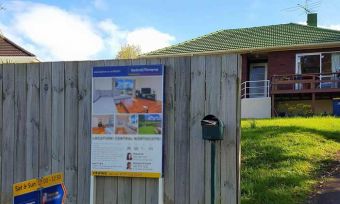What is gearing?
Essentially, “gearing” refers to borrowing money to buy an asset – and, in property circles, is when a home loan is taken out to purchase an investment property.
There can be positive gearing – where the rental income provides a profit above the cost of the mortgage – or, negative gearing – where the rental income is less than the cost of the mortgage.
What is negative gearing?
Negative gearing is when the cost of the home loan repayments and other fees, for the investment, are greater than the rental income received from the property.
Historically, your investment loss meant you would qualify for tax reductions on your salary income.
For instance, if your loss accrued from negative gearing was $15,000 and your taxable income was $80,000, then you only needed to pay tax on $65,000 of your income. However, a tax bill released in December 2018, announced that the negative gearing tax loophole would be canned. This legislation change has already come into effect.
The opportunity for tax deductions is instead pushed out over future years, where you’re eligible for tax reductions on future rental properties, based on your accrued loss of the current property. The term “ring-fencing” is commonly used in this scenario. Ring-fencing property investment rental losses essentially means you can no longer offset your losses onto income from other sources.
Despite this, you can still make a long-term profit on your investment once the value of the property increases (if it increases at all). However, there is risk involved if your property were to devalue over the period.
What is positive gearing?
Positive gearing is a much more straightforward concept than negative gearing. “Positive gearing” is simply when the cost of holding your investment through interest is less than the income you receive from it. Basically, the term applies when mortgage repayments, as well as maintenance costs and fees, are less than the income you are earning from the rental. This is the ideal scenario for most property investors, as you are immediately making a profit on that investment.
However, positive gearing isn’t always possible right away, if you don’t have the minimum deposit amount. This is why many property investors turn to negative gearing.
How does negative gearing work?

The basic goal of a negatively geared property is to turn a loss into a gain. You obviously shouldn’t invest in a property with the intention of making a loss, but the purpose of negative gearing is the idea that you will lose money in the beginning stages but earn a profit in the long run.
There are many different reasons why the cost of a property can outweigh the income, but they can be divided into two different categories:
- Non-cash costs such as the depreciation in the property’s value
- Cash costs such as interest payments, bank fees, insurance premiums, property management fees, and more
If you add the amount of cash and non-cash costs together and they are more than your rental income from the property, then there is a net rental loss.
Pros and cons of negative gearing
As with any investment strategy, there are potential drawbacks as well as potential benefits to negative gearing. Many people lose money on negative gearing because they aren’t fully aware of the consequences.
Canstar has compiled a brief list of the pros and cons of negative gearing to give you some idea of how to determine whether it might be a good idea for your situation.
Pros

- Reduce your taxable income from your property profile: After the introduction of the ring-fencing of property losses, property investors can turn their investment losses into a positive by offsetting it against their future profit of properties. This means they will essentially pay less in tax. If you’re disciplined with your investments, then negative gearing is one way to absorb any interest losses over the short-term.
This enables low income earners and middle-income earners to invest in property, which they likely would not be able to afford otherwise.
- Capital growth: Besides tax savings, arguably the biggest benefit of negative gearing is that it can allow an investor to afford to buy a property with the potential for high capital growth. Capital growth potential is the most common goal of property investors.
Properties that have immediate positive cashflow are hard to find, but even if there’s no immediate return, negative gearing allows you to more easily afford some properties that will increase in value in the future.
- More property choice options: By negatively gearing, there are more property options to choose from. Negative gearing can open up the range of properties that would usually be out of your price range. In addition, you have the opportunity to choose a property where the rent would initially not fully cover the mortgage.
This can potentially allow an investor to invest in safe, secure areas that are likely to provide regular rent, or produce high capital growth. Choosing a trusted area is always a sound investment strategy.
Cons
- Risk: As with any investment strategy, there is a degree of risk that comes with negative gearing. Borrowing money to fund a property comes with the possibility of rising interest rates and depreciation in the value of your property, which can eat away at the potential capital gains.
Many people incorrectly assume that negative gearing is a fool-proof strategy to “save money” on tax, which is very dangerous. No investment strategy can be called “fool-proof” or “safe”, and significant losses are possible if the investor underestimates the amount of the loss they are making on their investment.
- Dangerous for housing affordability in the property market:
Many people now simply see property as an investment, which is one of the causes of the skyrocketing house prices across the country. It drives up house prices while not doing much to generate supply.
Increasing house prices is not terrific for the economy, as a whole, because it means people are borrowing more and more money. It’s a trend that could well have negative long-term consequences.
- More people borrowing more money:
While it’s actually the middle and lower income earners who are using negative gearing, negative gearing does lend itself to high income earners. Such people can afford to buy properties that don’t pay for themselves, on top of financing their usual lifestyle.
Negative gearing may encourage those with limited income to invest solely in one property because it’s all they can afford, rather than investing in a more diversified portfolio.
Understanding property investment is no easy feat. Once you understand the jargon, the next step is to determine which strategy is the best for your personal situation. While negative gearing may be the only option for some, the risks may not be worth it for others – this is something you’ll need to decide for yourself.
However, regardless of your decisions, it’s always best to find the lowest home loan possible so you can save on interest. Canstar compares home loans across a range of providers – use the comparison tool below to see how they stack up.




Share this article